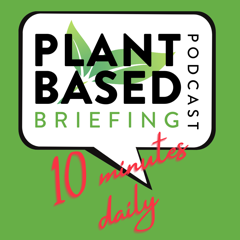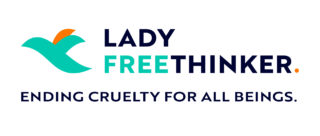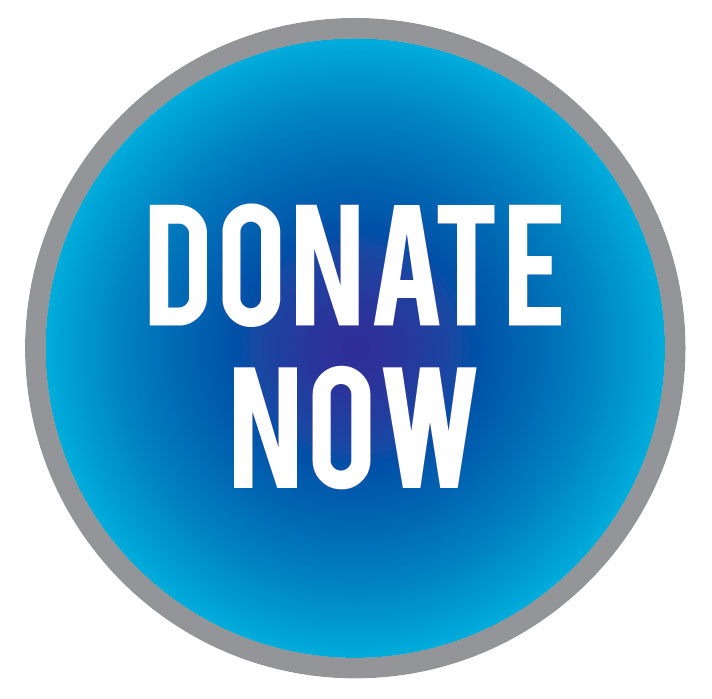Podcast Transcript
Hope
Welcome to the Hope for the Animals Podcast sponsored by United Poultry Concerns. I’m your host, Hope Bohanec. And you can find all our shows at Hope for the Animals podcast.org and I welcome thoughts and questions about any of the shows. My email is hope at UPC – online.org. This is the fourth segment of a series that we’re calling the reason for vegan series that is supplemental to our full episodes. And in these short chats, I will be focusing in on certain aspects of the animal agriculture industry, answering the question why we are vegan, and today I’m going to talk about turkeys and the turkey meat industry.
We often don’t think about turkeys as consumers or even as animal advocates till around the holidays. And around 45 million turkeys are killed each year in the US for the two main holidays of Thanksgiving and Christmas. But there are around 250 million turkeys bred and killed each year. So turkeys are killed year round for their meat. And only about 18% of those are killed for the holidays. So the vast majority of turkeys who are bred and killed each year is for your everyday turkey slices and your turkey sandwiches.
The number of turkeys killed each year has gone down though in the last couple decades in 1998, there were 285 million turkeys killed that year. In the last few years, it’s gone down to about 240 million or so. So down about 50 million turkeys in the last couple of decades. So that’s good news to see that downward trend. But there’s still hundreds of millions of birds suffering in the industry. So we do need to continue to expose this industry and educate everyone about the plight of turkeys.
So I want to begin with a story of one of my most powerful encounters with a turkey was the first time I ever met a turkey. And it was many years ago I was about 20 and I did a month long internship with Farm Sanctuary in Northern California when they first opened. And when I first came to the sanctuary, I was just wandering around kind of getting to know the place and I came upon a field of turkeys. They were about 100 feet away from me and they were much bigger, like way bigger than I had imagined them to be. And I didn’t want to disturb them. But I really wanted to observe them. So I just sat down with my legs crossed in the field. And they saw me and they started to make their way over to me. And one giant beautiful bird came up and just stepped into my lap and just sat in my lap. I was shocked and elated and he was heavy but not too heavy. And I didn’t move and I just started stroking his feathers, which he seemed to really like and I was able to get a really good look at him and they are just amazing, regal, beautiful birds beautiful eyes. And his thick droopy wrinkly skin around his neck and across the beak. It’s called the snood and waddle. And that was changing colors. I had no idea that that they could do that. It went from this brilliant red skin around his neck, to kind of a pink and then to blue. And I later learned that this is common and can be actually a sign of their mood, which is really, really fascinating. And I was so amazed and moved by this bird in my lap that felt so comfortable to come up and just sit with me, on me. And we sat together for quite a while till the others started to move on and he got up and left and but I just I felt forever bonded with turkeys after that it was such a beautiful experience.
So unlike chickens, turkeys are native to North and South and Central America and Mexico. Turkeys prefer to walk. Their ground dwelling birds and they build their nests on the ground. But they can run really fast. They can run up to 12 miles an hour and they can fly up to 50 miles an hour.
When turkey moms lay their eggs, they can communicate with their babies while their babies are in their eggs. They can vocalize to each other and, peep and chirp. The babies can tell their mom that they need warmth or, you know, just communicating together. And when they’re hatched, young turkeys are called poults. And they stay with their mom for about five or six months before going off on their own. And turkey mothers will fight predators to protect their poults. I mean, even to the death they are fierce protectors of their families. But turkeys who are bred for their flesh, never know their mothers, they never know the joys of family life they never know the joys of foraging in the forest. Like chickens, they’re bred and hatched in hatcheries, these industrial horrible places without any comfort or love of a mother, and soon after birth are flung and thrown around in the machinery and the conveyor belts.
Like chickens in the egg industry, they are painfully de-beaked with a hot blade or sometimes a laser. It cuts off the front portion of their nerve-sensitive, blood-rich, and it can cause lifelong pain. They can have difficulty eating, pecking, preening, cleaning themselves. I mean, a bird’s beak is how they experience and sense the world. And they’re constantly feeling the loss of that appendage.
Turkeys are also often de-toed. This is something that’s unique to Turkey production. When turkeys feel threatened, they will use their talons, their sharp nails to defend themselves. And because of the crowded conditions in the turkey industry, the harsh and brutal treatment workers roughly handling them at a fast pace. Some turkeys will rightly defend themselves and attack their abusers, the industry workers. And instead of treating them more kindly and with respect, the industry actually cuts off the first one or two digits of their toes when they’re babies. They’ll use crude instruments to do this, like branch trimmers or scissors. It’s incredibly painful. And some of the turkeys will never walk properly after and they have trouble balancing. And by the way, you know sanctuaries never have a problem with turkeys attacking with their talons. Because those turkeys are treated with love and care and respect. And they know they’re in a safe place. It’s only a function of how cruel the industry is that they feel threatened and will use their talons. And then the even more cruelly, they cut off their toes. It’s awful.
I had the pleasure of meeting two turkeys named Dakota and Miwok. This was also at Farm Sanctuary. But it was some years after my first encounter. And it was maybe about 10 years ago when I was researching for my book The Ultimate Betrayal. And these two birds, Dakota and Miwalk, I remember them well because they were so friendly and kept following us around. But they were both de-beaked and de-toed. And you could tell because instead of natural talons, they just had these deformed looking stumps for feet. And I was told that they were rescued from a humane free range farm. So these mutilations happen no matter the label.
And people are looking for these labels now like free range and certified humane. You can see it on turkey meat turkey slices, but these labels are unregulated. There’s rarely any on-site inspection of a farm, no farmer is denied a request to use the labels. They mean nothing. And there’s this kind of romanticized idealized notion with labels like free range. But even if the turkeys actually do have some access to the outside of their windowless warehouse confinement building, which is where they keep the thousands of birds indoors, even if they do have access to the outside, it is often just a dusty pin with no natural features no trees, no grass, when you have thousands of birds who are forced to sit and stand in these crowded yards or in filthy litter, which is the wood shavings that they’ll put inside these confinement buildings. The excrement builds up and they start breathing this burning ammonia fumes and that ammonia, fume and dust irritates their lungs and they develop respiratory diseases, ulcerated feet, ammonia burned eyes and throat.
Turkey breast meat, the meat from their breast is the most desirable. So turkeys, no matter the label have been genetically manipulated with breeding to have this huge breast muscle, and they’re often top heavy, they can’t hold their own weight, and their legs just give out from under them and break. They’ve been bred to grow so fast and so heavy that their bones are too weak to carry their weight.
Turkeys frequently suffer from painful lameness, so severe that they can’t walk without help from their wings, they use their wings like crutches to reach food and water. If a seven pound human baby grew as fast as baby turkeys are forced to grow, the human baby would weigh 1500 pounds in 18 weeks. They have been that manipulated, it’s such an unnatural process now, and these birds suffer for it.
Because of this in-bred deformity, they can’t mate naturally anymore. So the males are milked for their sperm. That’s what it’s called, the industry term is milked, which means they are masturbated and the sperm is collected and then artificially implanted into the females for breeding. And this process is done in such a brutal rough manner. It’s really insensitive handling the birds are grabbed and wrestled upside down. They’re terrified and it’s a sexual violation of both genders.
Turkeys are so genetically altered, that they are full grown at about two to five months. And they’re sent to slaughter in just a fraction of their natural lifespan. It’s about the human equivalent of preteens. They barely get any life and what little life they do get is miserable.
The final horror for turkeys is the hours of torturous transportation to slaughter. There’s no food or water possibly for days in these trucks in all extremes of weather. At the slaughterhouse turkeys are roughly torn from their crates and they’re hung upside down by their feet on a conveyor belt. And this is torture for these heavy birds especially because their leg joints can just dislocate out of the socket trying to hold the weight of the bird upside down by their legs.
They go down the conveyor belts and are struggling in pain, and they are killed by throat cutting and bleeding out. And this is a slow, prolonged, painful death.
Turkeys are beautiful, incredible birds, each with his or her own personality, desire to live free desire to raise a family—they have a zest for life. We have no right to take that away, to take away their agency to, take away their very life. It’s unnecessary and it is truly an immoral injustice.
Thank you for listening to this supplemental segment called the reason for vegan. To learn more about turkeys and the turkey meat industry. Please visit UPC-online.org and you can find the other reason for vegan series shows as well as our full podcast episodes with more great information and special guest interviews at Hope for the Animals podcast.org and please remember the only way to truly be sure that no turkey suffered is to not eat turkey meat and to live vegan.




